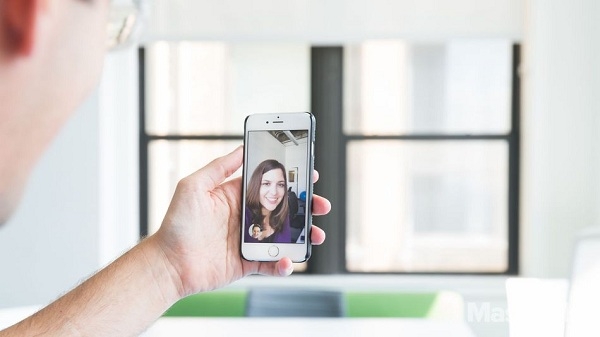If the first app you thought of was FaceTime, you’ve perfectly demonstrated a big problem on the Android side. Although there’s no shortage of video calling apps on Google’s mobile platform — Skype, Snapchat, Viber, and even Google’s own Hangouts are all capable services — there isn’t a single go-to app that everyone just uses like there is on iPhone.
That’s why Google is releasing Duo, a new dead-simple app for video calls. Announced at Google I/O, the company’s developer conference, back in May, the app is having its official coming-out party on Tuesday. Google gave Mashable a preview of the app, and, as FaceTime clones go, it’s one of the best we’ve ever seen.
Although Duo is available on both iOS and Android, Google’s goal is clearly to give Android users a FaceTime-like experience. According to Google’s vice president of communications services, Nick Fox, Google had three priorities when it crafted what it sees as the perfect app for one-to-one videoconferencing: simplicity, speed and “human” features.
The simplicity is apparent as soon as you launch the app. Similar to Snapchat, you’re greeted with a view from your phone’s camera, although on Duo it’s your selfie cam. Below your beautiful face, there’s a row of yellow circles that show your most recent calls. In the bottom left is the big, blue call button; tapping it brings up a list of your phone’s contacts.
Did you catch that? Duo uses your phone’s contact list — not your Gmail contacts. And when you first set up the app, you do so with your phone number and not your Google account. This is a big deal, but more on that in a minute.
Using Duo
When you’re in a call, the interface is so austere that it’s practically nonexistent. All you see is your call partner’s face on the main screen with your own in a small circle on the lower left (you can’t move it). That’s pretty much it. Tapping the screen exposes the few things you can do: mute yourself, flip to the front camera, or hang up.
Tapping on your face will reverse your position with your partner, so that your face becomes the larger one — a feature that seems to cater specifically to narcissists.
Fox says Google worked hard to make Duo reliable — it’s supposed to work over almost any kind of mobile network, all the way down to 2G (at which point the call becomes audio-only). It’s built on WebRTC, a video standard Google helped create that’s known for its stability.
From Mashable’s office in New York City, I called my colleague Karissa Bell in San Francisco over Duo. Over Wi-Fi, the video quality was good but not great — I could tell it wasn’t using all the pixels on my iPhone 6. It was also slightly laggy, but that lag all but disappeared when we tried an LTE call a few minutes later (the lagginess could have been due to a bad Wi-Fi connection). Audio was good throughout.
Among video calling apps, Duo is unique for its ability to send video (though not audio) even before the call, a feature Google calls Knock Knock. The moment you initiate the call, the recipient will see the view from your front-facing camera. Fox says the feature encourages callers to use gesturing and facial expressions to get the recipient’s attention.















